Students looking for the Bridges in Mathematics Grade 5 Student Book Answer Key Unit 4 Module 1 can find a better approach to solve the problems.
Bridges in Mathematics Grade 5 Student Book Answer Key Unit 4 Module 1
Bridges in Mathematics Grade 5 Student Book Unit 4 Module 1 Session 1 Answer Key
Fraction & Decimal Review
Question 1.
Find the sum or difference. Show your work.
a. \(\frac{1}{3}\) + \(\frac{3}{8}\) = _______________
Answer:
\(\frac{1}{3}\) + \(\frac{3}{8}\)
The denominator of both fractions are not the same. So, find the lcm of the denominator.
LCD is 24
\(\frac{8}{24}\) + \(\frac{9}{24}\) = \(\frac{8+9}{24}\) = \(\frac{17}{24}\)
b. \(\frac{6}{7}\) + \(\frac{2}{5}\) = _______________
Answer:
\(\frac{6}{7}\) + \(\frac{2}{5}\)
The denominator of both fractions are not the same. So, find the lcm of the denominator.
LCD is 35
\(\frac{30}{35}\) + \(\frac{14}{35}\) = \(\frac{30+14}{35}\) = \(\frac{44}{35}\)
c. \(\frac{6}{9}\) – \(\frac{1}{4}\) = _______________
Answer:
\(\frac{6}{9}\) – \(\frac{1}{4}\)
The denominator of both fractions are not the same. So, find the lcm of the denominator.
LCD is 36.
\(\frac{24}{36}\) – \(\frac{9}{36}\) = \(\frac{24-36}{36}\) = \(\frac{15}{36}\)
d. \(\frac{5}{12}\) – \(\frac{1}{8}\) = _______________
Answer:
\(\frac{5}{12}\) – \(\frac{1}{8}\)
The denominator of both fractions are not the same. So, find the lcm of the denominator.
LCD is 24
\(\frac{10}{24}\) – \(\frac{3}{24}\) = \(\frac{7}{24}\)
Question 2.
Isabel and Jared each made a pan of brownies. Their pans of brownies were exactly the same size. After the first day, there was \(\frac{1}{4}\) of one pan and \(\frac{2}{12}\) of the other pan left. What fraction of the brownies were eaten? Show your work.
Answer:
Given,
Isabel and Jared each made a pan of brownies. Their pans of brownies were exactly the same size.
After the first day, there was \(\frac{1}{4}\) of one pan and \(\frac{2}{12}\) of the other pan left.
Let total size of brownies made by Isabel be 1.
total size of brownies made by Jared be 1.
Total = 1 + 1 = 2
Fraction of brownie eaten = total eaten brownies/total brownies
Eaten Brownie (Isabel) = 1 – 1/4 = 3/4
Eaten Brownie (Jared) = 1 – 2/12 = 5/6
Total eaten brownies = 3/4 + 5/6 = 19/12
Fraction of brownie eaten = E/T
Fraction of brownie eaten = 19/12/2 = 19/24
Question 3.
Which of the following describes the value of the number 6.21? (Mark all that are true.)
![]() six hundred twenty-one hundredths
six hundred twenty-one hundredths
![]() six and twenty-one hundredths
six and twenty-one hundredths
![]() sixty-two tenths and one hundredth
sixty-two tenths and one hundredth
![]() six hundred twenty-one tenths
six hundred twenty-one tenths
Answer: 6.21 can be written in the word form of six and twenty-one hundredths.
Question 4.
Round 156.789 to the nearest:
one
tenth
hundredth
Answer:
Round 156.789 to the nearest tenth is 156.8
Bridges in Mathematics Grade 5 Student Book Unit 4 Module 1 Session 2 Answer Key
Work Place Instructions 4A The Product Game, Version 2
Each pair of players needs:
- 1 Product Game, Version 2 Record Sheet
- 2 game markers
- pencils
1. Players decide who is going first. Player 1 is O and Player 2 is X (or players can use two different colors).
2. Player 1 places one of the game markers on any factor.
3. Player 2 places the other game marker on a factor. Then she multiplies the two factors, draws an X on the product, and writes an equation to match the combination.
Tabitha I choose 6.
Ambrose I choose 9. I am drawing my X on 54 because 6 × 9 is 54.
4. Player 1 moves one game marker to get a new product. He can move either of the markers.
Tabitha I moved the factor marker from the 6 to the 10. Since 9 x 10 is 90, I’ll put my O on 90.
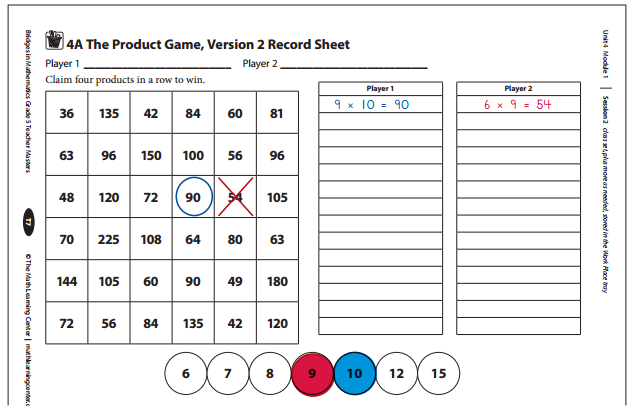
5. Play continues until a player gets four products in a row across, up and down, or diagonally.
- Only one factor marker can be moved during a player’s turn.
- Players can move a marker so that both are on the same factor. For example, both markers can be on 9. The player would mark the product 81 because 9 × 9 = 81.
- If the product a player chooses is already covered, the player loses that turn.
Game Variations
A. Players can try for three in a row (easier) or five in a row (harder).
B. Players can introduce wild numbers by adding a blank circle to the list of factors. Players can also cover some of the products to make them blank. Then players can make the blank spaces any factor or product they want or need as they play.
C. Players can make their own game board in which they rearrange the numbers. They can also make a game board with different factors and products, but they need to make sure they include all of the products of the factors they choose.
Answer:
Product Problems
Question 1.
Find the product.
a. (18 × 4) × 5 = ______________
Answer:
(18 × 4) × 5
= 72 × 5
= 360
b. 22 × (6 × 10) = ________________
Answer:
22 × (6 × 10)
= 22 × 60
= 1320
c. 15 × (4 × 20) = ________________
Answer:
15 × (4 × 20)
= 15 × 80
= 1200
Question 2.
Find the quotient.
a. 1,300 ÷ 100 = ______________
Answer:
1,300 ÷ 100
= 1300/100
= 13
b. 1,300 ÷ 10 = ______________
Answer:
1,300 ÷ 10
= 1300/10
= 130
c. 1,300 ÷ 5 = ______________
Answer:
1,300 ÷ 5
1300/5 = 260
Question 3.
Solve the problems in this string. Use the answers from the first few combinations to help solve the rest.
a. 48 × 10 = ______________
Answer:
48 × 10
= 480
When we multiply 48 with 10 0 will be add to the right.
By multiplying 48 and 10 we get 480.
b. 48 × 5 = ______________
Answer:
48 × 5
= 240
By multiplying 48 and 5 we get 240.
c. 48 × 15 = ______________
Answer:
48 × 15
= 720
By multiplying 48 and 15 we get 720.
d. 48 × 100 = ______________
Answer:
48 × 100
= 4800
By multiplying 48 and 100 we get 4800.
e. 48 × 50 = ______________
Answer:
48 × 50
= 2400
By multiplying 48 and 50 we get 2400.
f. 2,448 ÷ 48 = ______________
Answer:
2,448 ÷ 48
2448/48 = 51
By dividing 2448 by 48 we get 51.
Bridges in Mathematics Grade 5 Student Book Unit 4 Module 1 Session 3 Answer Key
Callie’s Cake Pops
Callie is trying to earn money to purchase a new pair of soccer cleats. She has decided to make her famous cake pops and sell them to her friends.
Question 1.
Callie’s mom is willing to loan her the money to get the fundraiser started. Callie knows that her cake pops cost $1.25 to make, and she’d like to make 36 of them. How much money does Callie need to borrow from her mom?
Answer:
Given,
Callie’s mom is willing to loan her the money to get the fundraiser started.
Callie knows that her cake pops cost $1.25 to make, and she’d like to make 36 of them.
$1.25 × 36 = $45.00
Callie will need to borrow $45 from her mom.
Question 2.
Cauje priced her cake pops at $1.75 each and sold 32 of them.
a. How much money did Callie collect for her 32 cake pops?
Answer:
Given,
Cauje priced her cake pops at $1.75 each and sold 32 of them.
$1.75 × 32 = $56.00
Callie collected $56.00
b. How much did Callie earn to put toward her soccer cleats? (What was her profit?)
Answer:
$56 – $45 = $11
Callie made $11 profit.
Multiplication Strategy
Here is a completed box challenge puzzle. If you look at it closely, you’ll see that the number at the top is the product of the two numbers in the middle, and the number at the bottom is the sum of the two numbers in the middle.

4 × 3 = 12
4 + 3 = 7
Question 1.
Fill in the blanks to complete each of the box challenge puzzles below. Remember that the number at the top is the product of the two numbers in the middle, and the number at the bottom is the sum of the two numbers in the middle.

Answer:
40 ÷ 5 = 5
13 – 5 = 8
So, the missing number is 8.
24/6 = 4
10 – 6 = 4
So, the missing number is 4.
36/3 = 12
15 – 3 = 12

Question 2.
The craft store sells boxes of modeling clay. Each box holds 14 sticks of clay. Complete the ratio table to find out how many sticks there are in different numbers of boxes.

Answer:
The craft store sells boxes of modeling clay. Each box holds 14 sticks of clay.
1 × 14 = 14
2 × 14 = 28
3 × 14 = 42
6 × 14 = 84
10 × 14 = 140
9 × 14 = 126

Question 3.
You can also buy individual sticks of modeling clay for $0.35 each. Find out how much it would cost to buy different numbers of individual sticks of clay.

Answer:
You can also buy individual sticks of modeling clay for $0.35 each.
0.35 × 1 = 0.35
0.35 × 2 = 0.70
0.35 × 4 = 1.40
0.35 × 8 = 2.80
0.35 × 20 = 7
0.35 × 19 = 6.65

Question 4.
Miranda was asked to solve the problem 1,300 ÷ 26. How can she use multiplication to solve this problem? Find the answer and describe the strategy you used.
Answer:
Given,
Miranda was asked to solve the problem 1,300 ÷ 26.
1300 ÷ 26 = 50
Bridges in Mathematics Grade 5 Student Book Unit 4 Module 1 Session 4 Answer Key
Box Puzzle Challenges
Complete the box puzzle challenges. Remember that the top box shows the product of the two middle numbers, and the bottom box shows the sum of the two middle numbers.
Question 1.
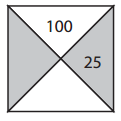
Answer:
100 ÷ 25 = 4
25 + 4 = 29

Question 2.
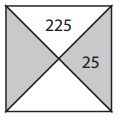
Answer:
225 ÷ 25 = 9
25 + 9 = 34

Question 3.
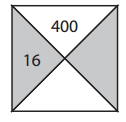
Answer:
400 ÷ 16 = 25
16 + 25 = 41

Question 4.

Answer:
350 ÷ 14 = 25
14 + 25 = 39
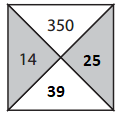
Question 5.
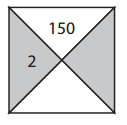
Answer:
150 ÷ 2 = 75
75 + 2 = 77

Question 6.

Answer:
600 ÷ 75 = 8
75 + 8 = 83
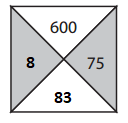
Challenge
Question 7.
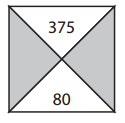
Answer:
75 + 5 = 80
75 × 5 = 80

Question 8.
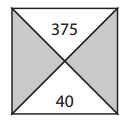
Answer:
15 × 25 = 375
15 + 25 = 40
